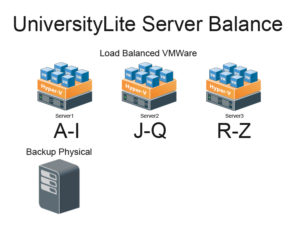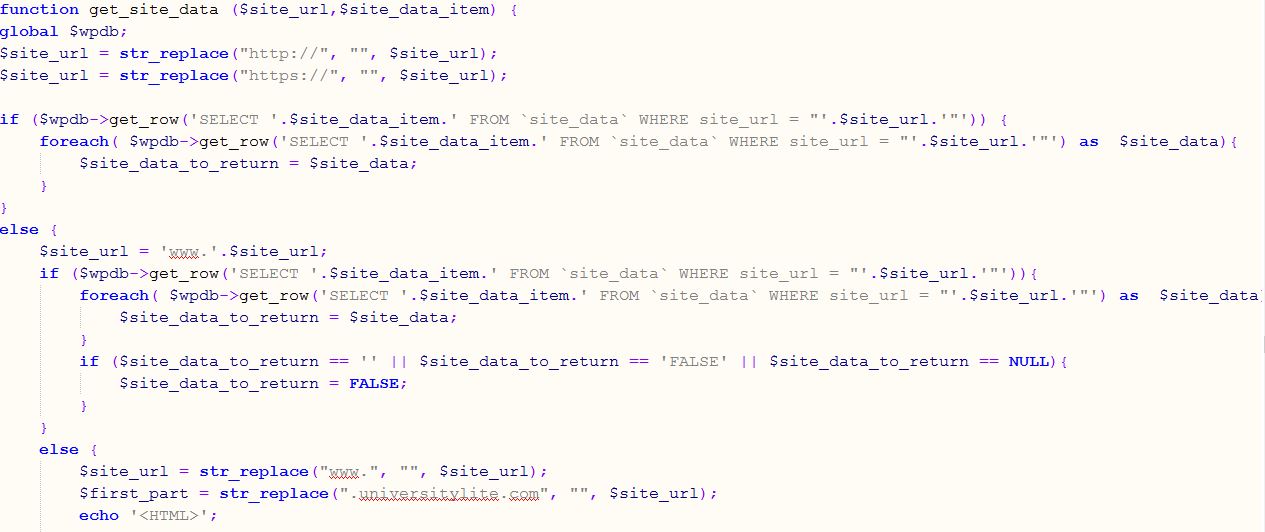Religiosity and Cognitive Reasoning Skills
Inverse Correlation with Intelligence and Critical Thinking: Numerous studies in cognitive science and psychology have explored how religiosity (belief in a personal God and engagement in organized religion) relates to measures of intelligence, analytical reasoning, and critical thinking. A consistent finding is a small but reliable negative correlation between general intelligence and religiosity. For example, a meta-analysis of 63 studies found a significant negative association between intelligence and religious belief; an updated review of 83 studies confirmed this correlation in the range of r ≈ –0.20 to –0.23 pubmed.ncbi.nlm.nih.gov. In practical terms, this suggests that, on average, individuals who score higher on intelligence or analytic thinking tests tend to report lower religiosity, and vice versa. Notably, this correlation persists even after controlling for education level, indicating it is not solely an artifact of schooling. Instead, it appears partly related to cognitive style – people with a more analytical, questioning thinking style are less inclined toward traditional religious belief pubmed.ncbi.nlm.nih.gov.
Analytical vs. Intuitive Thinking: Research suggests that religious belief is often associated with a more intuitive cognitive style, whereas non-belief correlates with a more analytical style. In one large study (N > 63,000), atheists outperformed religious individuals on reasoning and logic problems overall pmc.ncbi.nlm.nih.gov. The performance gap was especially pronounced on tasks that required overruling intuitive responses with logical analysis – for instance, on a classic conflict task (where intuitive answers lead one astray, akin to a Stroop or trick question), the most dogmatically religious group scored about 0.6 standard deviations lower than atheists pmc.ncbi.nlm.nih.gov. By contrast, on straightforward problems with no misleading intuitive lure, the differences were much smaller. These results align with the theory that religious individuals tend to rely more on intuitive reasoning, which can be a disadvantage on problems that require analytical override pmc.ncbi.nlm.nih.gov pmc.ncbi.nlm.nih.gov. Other experiments have found that prompting people to engage in analytic thinking (for example, by solving math puzzles or even exposing them to subtle cues like a visual image of The Thinker statue) can temporarily reduce reported belief in God in both believers and skeptics sciencedaily.com, supporting a causal link between analytic reasoning and religious disbelief (though this effect is debated in follow-up studies).
Critical Thinking and Scientific Literacy: Belief in a personal God, particularly in conservative or literalist forms of Christianity, has also been linked to lower performance on certain critical thinking and scientific knowledge metrics. For instance, multiple surveys in the United States have found that higher religiosity predicts lower science literacy and less acceptance of scientific explanations for natural phenomena. In one set of four studies (total N = 9,205), general religiosity was negatively associated with factual science knowledge even after controlling for education and demographics pmc.ncbi.nlm.nih.gov. This relationship was partly mediated by attitudes: more religious participants tended to have more negative attitudes toward science, which in turn correlated with poorer scores on science knowledge quizzes pmc.ncbi.nlm.nih.gov. A longitudinal aspect of this research showed that parents’ religiosity and emphasis on faith in child-rearing predicted their children’s lower interest in science decades later pmc.ncbi.nlm.nih.gov. In other words, a strong religious upbringing might discourage pursuit of scientific learning, suggesting a potential causal influence of religiosity undermining scientific curiosity or exposure.
Evidence from Surveys: Broad survey data mirror these findings. In the U.S., groups with the highest scientific and religious literacy (such as members of secularist organizations, atheists/agnostics, and Jews) tend to be the least religious, whereas groups with the strongest belief in a personal God (e.g. certain Christian demographics) on average score lower on general knowledge of science and even of religion itself viatorvoice.saintviator.com. In a Pew Forum religious knowledge survey, atheists and agnostics scored highest (answering the most questions correctly), outperforming evangelical Protestants and Catholics on many questions viatorvoice.saintviator.com. This suggests that highly religious individuals may often have a more narrow scope of knowledge (focused on their own faith) and possibly less exposure to secular or scientific perspectives. It’s important to note, however, that these are statistical trends and do not mean all religious believers lack reasoning skills – many individual believers are excellent scientists or thinkers. The data simply indicate an overall pattern: populations and individuals with strong personal God beliefs on average demonstrate slightly lower performance on tests of analytic reasoning, logical inference, and scientific knowledge, compared to less religious or nonreligious populations psypost.org psypost.org.
To summarize some representative findings from the research on religiosity and cognitive reasoning, the table below highlights a few key studies and their results:
| Study / Source | Sample & Methodology | Key Findings |
|---|---|---|
| Zuckerman et al. (2013, 2020) Meta-Analysespubmed.ncbi.nlm.nih.gov | 63 studies (2013); 83 studies (2020) – mixed samples (college and general population) | Found a small but significant negative correlation between intelligence and religiosity (approximately –0.20). Higher intelligence was associated with lower religious belief, and this relation was not explained by education level but was partly mediated by a more analytical thinking stylepubmed.ncbi.nlm.nih.gov. |
| Daws & Hampshire (2017)pmc.ncbi.nlm.nih.govpmc.ncbi.nlm.nih.gov | 2 large online cohorts (N ≈ 63,000; various countries) – cognitive tests and surveys on religiosity | Atheists scored higher on reasoning tasks than religious participants overall. Differences were largest on problems requiring one to override intuitive responses with logic, supporting the idea that religious believers lean toward intuitive thinking. On a tricky cognitive conflict task, atheists outperformed highly dogmatic believers by ~0.6 SD, whereas on a straightforward reasoning task with no intuitive trap, groups performed similarlypmc.ncbi.nlm.nih.govpmc.ncbi.nlm.nih.gov. |
| McPhetres & Zuckerman (2018)pmc.ncbi.nlm.nih.govpmc.ncbi.nlm.nih.gov | 4 studies (N = 9,205, nationally representative U.S. samples + follow-ups) – measured general religiosity, attitudes toward science, and science literacy | Higher religiosity predicted lower science literacy. More religious individuals answered fewer scientific knowledge questions correctlypmc.ncbi.nlm.nih.gov. This link was partly due to negative attitudes toward science among the religious (e.g. skepticism about science’s value)pmc.ncbi.nlm.nih.gov. A longitudinal analysis found that religious upbringing had a lasting impact, with children of more religious parents showing less interest in science 20 years laterpmc.ncbi.nlm.nih.gov. |
| Pew Religious Knowledge Survey (2010)viatorvoice.saintviator.com | Nationwide U.S. survey quizzing adults on core facts about various religions (incl. their own) and general knowledge | Nonreligious individuals scored highest in religious and general knowledge (atheists/agnostics and Jews, on average, answered the most questions correctly)viatorvoice.saintviator.com. Mainstream Christian groups scored lower, indicating many devout individuals lack knowledge of other faiths or even some tenets of their own, which hints at intellectual insularity. Interestingly, this survey also reflects that people without strong religious affiliation tend to be more broadly informed about religion and science. |
Overall, the empirical literature supports a modest inverse relationship between strong personal God belief (especially in its more dogmatic forms) and certain cognitive reasoning skills. Factors like education, culture, and socioeconomic conditions can moderate this relationship, but the core pattern – slightly lower average analytical and scientific proficiency among the highly religious – has been replicated in multiple studies
pmc.ncbi.nlm.nih.gov. Proposed explanations range from cognitive style (intuitive vs. analytic thinking) to social effects (religious communities sometimes de-emphasize secular knowledge). It’s also worth noting that critical thinking can be applied within a religious framework (e.g. theological scholarship), but when it comes to questioning the tenets of faith itself or scientific claims that contradict literal religious narratives, highly religious individuals often exhibit more cognitive bias (e.g. rejecting evolutionary science in favor of creationism on faith grounds). This leads into the psychological mechanisms by which faith is maintained.
Historical Use of Religion for Political, Social, and Economic Control
Belief in gods and the institutions of organized religion have not only been personal spiritual matters, but also powerful tools for social control throughout history. Rulers and governing classes have frequently harnessed religion to legitimize authority, enforce moral codes, and maintain social order. Below are several historical examples from different societies illustrating how religions have been created or used to exercise political, social, and economic control over populations:
- Divine Kingship in the Ancient World: Many early civilizations merged religious authority with political power. In ancient Egypt, for example, pharaohs were regarded as gods or demigods on earth. This divine status of the ruler mandated absolute obedience from subjects – disloyalty was not just treason but blasphemy. Similarly, in the Roman Empire, emperors were deified (the Imperial Cult), and later, after Emperor Constantine embraced Christianity, the Roman state used the Christian Church as a unifying imperial ideology. More generally, ancient states often claimed their kings ruled by divine sanction (the “divine right to rule”). Questioning the king’s laws meant questioning God’s will. In some cases, the monarch was considered a god incarnate – theocracy in the most literal sense (as in Japan, where until 1945 the Emperor was officially worshipped as a deity)nps.gov. By making law and authority indistinguishable from divine command, these societies used religion to discourage rebellion and ensure loyalty through fear of divine punishment.
- Medieval Christendom – Church and State Alliance: In medieval Europe, particularly under Christianity, religion was explicitly used to uphold the social hierarchy and state authority. The Catholic Church became extremely powerful and wealthy, intertwined with kings and nobles in governing the populace. Political Legitimation: Kings claimed to rule “by the grace of God.” The Church anointed monarchs and taught the populace that the king’s authority was God-given and thus not to be challenged. For instance, after the fall of Rome, many European kingdoms adopted Christianity as the official religion; over centuries Christianity became the dominant political structure binding kingdoms together under a shared belief system nps.gov. The doctrine of Divine Right of Kings in Europe held that a monarch’s authority came directly from God, giving religious weight to loyalty. Social Control: The Church’s influence on daily life was total – people were taught from birth that the only path to salvation (Heaven) was through Church sacraments and obedience thehistoryclassroom.weebly.com. This notion allowed clergy to wield immense social control, since disobeying the Church’s teachings could doom one’s eternal soul. Fear-based enforcement was common: threats of excommunication (expulsion from the Church) or anathema were effectively threats of hell, used to keep people (and even kings) in line. Economic Control: The Church also commanded great economic power. It accumulated vast landholdings across Europe; peasants were often required to work part-time on Church lands for free and owe a tithe of 10% of their produce or income to the Churchthehistoryclassroom.weebly.com. These heavy tithes and labor obligations, enforced by the belief that giving to the Church was a godly duty, sometimes caused hardship for farming families thehistoryclassroom.weebly.com. Meanwhile, the Church itself was usually tax-exempt, allowing its wealth to surpass even that of secular lordsthehistoryclassroom.weebly.com. By the High Middle Ages, the Church was not just a religious institution but a feudal power in its own right – it could fund armies, influence or depose kings, and censor information (such as through the Inquisition or by controlling what books could be copied and read). In short, medieval religious institutions policed thought and behavior, and extracted economic resources, all under the justification of divine authority.
- State Religion and Monolithic Belief: Throughout history, many rulers have created new religious institutions or reshaped existing ones to cement their control. A notable example is King Henry VIII of England, who in the 1530s broke away from the Catholic Church and established the Church of England (Anglican Church) with the monarch at its head. By declaring himself the supreme head of a new state church, Henry VIII eliminated papal influence and asserted that he ruled England “by the grace of God alone,” answerable only to God nps.gov. This move was partly to secure an annulment the Pope denied, but it had the lasting effect of placing religious authority in the hands of the English crown. After this shift, English subjects were required to swear allegiance to the crown’s religion; dissenters (Catholics, later Puritans, etc.) were persecuted, thereby uniting the realm under one politically controlled faith. This is an example of religion being re-crafted for political ends. Similarly, in other regions, rulers have promoted one religion to solidify unity – e.g. the adoption of Orthodox Christianity by Vladimir the Great to consolidate the Kievan Rus’, or State Shinto in Meiji-era Japan, where the government elevated the Shinto faith and the divine status of the Emperor to foster nationalism and obedience.
- Theocratic Governance and Law: In some societies, religious institutions were the government. The Islamic world gives examples such as the early Caliphates (Umayyad, Abbasid, etc.), where the Caliph was both the spiritual and political leader of the realm. Islamic law (Sharia), derived from the Quran and Hadith, became state law. This meant that religious scholars and clerics (ulama) had significant power in governance, and religious conformity was enforced by law. Dissent from religious norms could be treated as a civil crime (heresy and apostasy were punishable offenses), and minorities paid special taxes (e.g. jizya on non-Muslims) which pressured some to convert. In essence, political and religious authority were unified, using faith to administer society. Another example is the Papal States in Italy, where the Pope directly ruled territory as a monarch for over a millennium – demonstrating direct governance by a religious institution en.wikipedia.orgen.wikipedia.org. Even in colonial America, Puritan New England functioned as a theocracy: the colonial governments in Massachusetts and elsewhere claimed they governed by God’s warrant. They enforced strict religious observance and punished deviations harshly. In the 17th century Massachusetts Bay Colony, for instance, magistrates could punish citizens for “interpreting God’s law” incorrectly; people were fined, banished, or even executed for blasphemy, heresy, or simply failing to conform to the official Puritan practices nps.gov. As one historical account notes, those governments “claimed that their right to rule was granted by the Christian God, and therefore they had absolute power to punish people for their thoughts, beliefs, words, actions, and even their bad luck” as violations of divine law nps.gov. This illustrates how a religious belief system can authorize extreme social control, reaching into the private conscience of individuals.
- Social Hierarchy and Economic Exploitation: Religion has also been used to justify social and economic hierarchies, making them appear ordained by heaven. A clear example is the caste system in Hindu society. For millennia, traditional Hindu teachings tied one’s caste (social class) to karma and dharma – the spiritual idea that a person’s position in life is a result of their deeds in past lives and that fulfilling the duties of one’s caste is a religious obligation. This religious doctrine discouraged rebellion against one’s social status; a peasant or “untouchable” was told that by dutifully accepting their lot, they would earn a better rebirth. In effect, caste-based oppression was reinforced by belief in divine justice, maintaining social order with minimal force. In medieval Europe, the Church’s economic domination (through tithes and land rents) similarly was cloaked in piety: paying taxes to the Church was taught as serving God. The fear of spiritual punishment kept peasants in line with these heavy economic burdens. The Church also sold indulgences (promises of reduced punishment in the afterlife) for money, a practice that leveraged spiritual beliefs for financial gain. Across cultures, we see that religious institutions often accumulated wealth by taxing or exploiting believers, and because these demands were backed by “God’s will,” people complied even to their own material detriment.
In summary, from ancient theocracies to medieval state churches to other religiously governed societies, religion has frequently been interwoven with governance as a means of control. It provided a divine legitimization of rulers (“God wants this leader/king to rule you”), enforced social norms (“God commands you to obey these laws or social roles”), and even extracted resources (“Give to the temple/church, or face spiritual consequences”). The psychological power of faith – particularly fear of divine punishment and hope of divine reward – has been a potent force to ensure obedience. Even as political systems secularized in many places, the historical record is replete with examples where religious authority and secular power worked hand-in-hand to direct the behavior of entire populations nps.gov thehistoryclassroom.weebly.com.
Cognitive Defenses Reinforcing Faith and Resisting Skepticism
Religious belief systems, especially those centered on a personal God and absolute doctrines, often develop psychological and social mechanisms that reinforce faith and protect it against challenges or skepticism. These cognitive defenses help maintain belief stability in adherents, ensuring that doubt is minimized and commitment remains high. Key mechanisms include indoctrination, fear-based conditioning, social reinforcement, and cognitive biases such as cognitive dissonance and confirmation bias:
- Indoctrination and Early Education: Most religions encourage instilling beliefs from a very young age, taking advantage of children’s impressionability. Indoctrination is essentially teaching a doctrine or belief uncritically, as absolute truth. Young children naturally trust parents and authority figures, and they have not yet developed strong critical thinking skills – making early childhood an opportune time to implant religious beliefs. For example, within Christianity it’s common for children to be taught Bible stories, to pray, and to accept the existence of God, heaven, and hell as given facts long before they could analytically examine those concepts. The result is that by adulthood the belief feels “obvious” or deeply ingrained. Statistics highlight the power of early indoctrination: one Pew Research Center study found that 77.6% of U.S. adults who were raised Christian remained Christian in adulthood, whereas very few people convert into Christianity without that early upbringing (only about 4% of current Christians had grown up non-religious)viatorvoice.saintviator.com. In contrast, among those raised without religion, nearly half ended up joining a religion later – suggesting that a neutral or secular upbringing leaves more room for changeviatorvoice.saintviator.com. This imbalance implies that most committed believers are “born into” their faith, not choosing it after impartial consideration, which is exactly what we’d expect if indoctrination is effective. From a cognitive perspective, once a belief network is established early on, new information is assimilated into that framework, and it becomes difficult to question fundamental premises that have “always” been assumed true. Moreover, experiments have shown that children exposed to religious teaching have a harder time distinguishing fantasy from reality in stories – one study found that 5-6 year-olds who attended church or parochial school were significantly more likely to believe a fantastical story was true, compared to secularly raised childrenviatorvoice.saintviator.com. This suggests that early religious exposure can increase a child’s credulity toward supernatural claims, effectively lowering the bar for belief in extraordinary ideas. Indoctrination, therefore, plants deep roots that can anchor the faith for life, making later critical inquiry emotionally and socially fraught for the individual.
- Fear-Based Teachings (Hell and Divine Punishment): Many religious traditions employ fear as a tool to reinforce belief. In Christianity, the concepts of Hell and divine judgment serve as powerful psychological sticks. From early on, believers may be taught that rejecting God or committing certain “sins” will result in eternal punishment or suffering after death. This is a heavy existential threat that discourages people from even entertaining doubts (“What if the religion is true? Then doubting or leaving it could doom me forever.”). Historically, the Church leveraged fear extensively: medieval people were taught that outside the Church there was no salvation, and that after death one would face hellfire for disobediencethehistoryclassroom.weebly.com. Such fear-based conditioning creates strong anxiety about skepticism. Even in contemporary religious communities, it’s common to instill a fear of consequences like, “If you don’t believe and trust God, you will face calamity or damnation.” In addition, fear of more immediate punishment (like social ostracism or divine discipline in this life) can be present. For instance, some charismatic Christian groups teach that illnesses, accidents, or personal failures are God’s punishment for doubt or lack of faith, which pressures members to maintain belief to feel “protected.” Fear of the unknown also plays a role: religion often provides comforting answers about death and life’s purpose, so the prospect of losing one’s faith brings the terror of existential uncertainty. This fear can subconsciously lead a person to shut down skeptical thoughts before they fully form, a kind of self-censorship driven by anxiety. In summary, by linking disbelief or apostasy to dire outcomes (eternal torture, misfortune, moral ruin), religious systems create an internal defense where the cost of skepticism feels incredibly high. Believers then emotionally police their own thoughts, which reinforces continued faith.
- Social Reinforcement and Community Pressure: Humans are social creatures, and religions often leverage community and identity to fortify belief. Social reinforcement means that the believer’s family, friends, and entire community continuously affirm the faith and apply pressure (sometimes gently, sometimes overtly) to remain devout. This happens through group rituals (weekly services, prayers, religious holidays) that create strong communal emotions and a sense of belonging tied to the faith. Being part of a religious community provides support, love, and status – which become contingent on staying within the faith’s norms. If someone begins to doubt or deviate, they risk losing this social network or at least disappointing those they care about. In some tight-knit religious societies, the prospect of being shunned or disowned by one’s family for leaving the faith is a very real deterrent to questioning beliefs. For example, ex-members of certain fundamentalist churches, Jehovah’s Witnesses, or Islamic communities that enforce apostasy taboos often face ostracism – an extremely painful social punishment. Thus, even if one has private doubts, the social cost of voicing or acting on them is high. On the flip side, conformity is rewarded: devout believers receive praise, respect, and trust from their community. This creates a classic groupthink environment where everyone publicly affirms the belief, which can make the belief feel undeniably true (because “everyone I know believes it, and smart people in my church believe it, so it must be true!”). Moreover, limited exposure to outside perspectives (sometimes due to intentional isolation – e.g. religious schools or media bubbles) means believers might rarely encounter strong challenges to their worldview. As a result, the social environment acts as an echo chamber. Studies have noted that some religious communities discourage reading literature from other faiths or secular philosophies, which keeps alternative ideas out of mindviatorvoice.saintviator.com. Indeed, the Pew survey mentioned earlier found devout Christians on average knew less about other religions than nonreligious people didviatorvoice.saintviator.com, indicating a kind of knowledge insulation. This insularity, combined with peer pressure, fortifies existing belief structures. In essence, believing is the path of least resistance socially, and doubt requires one to swim against the current of one’s entire community and identity – a very difficult thing to do.
- Cognitive Dissonance and Rationalization: When confronted with information or experiences that contradict their religious beliefs, devout individuals often employ cognitive defenses to reduce dissonance rather than changing the belief. Cognitive dissonance is the mental discomfort one feels when holding two conflicting ideas. To alleviate that tension, people typically either adjust their beliefs or reinterpret the conflicting information. Religions equip believers with well-developed rationalization strategies to handle dissonant evidence. For example, if scientific evidence contradicts a literal reading of scripture (say, evolution vs. creationism), a believer might invoke “God works in mysterious ways” or “the science is wrong or incomplete” rather than doubting the scripture. They might adopt allegorical interpretations to reconcile conflict (e.g. saying Genesis is symbolic, not literal, thus no conflict with science) – this preserves both the belief and intellectual satisfaction. In cases of failed religious predictions or promises, cognitive dissonance responses are especially visible. A famous case documented by Leon Festinger in When Prophecy Fails involved a doomsday cult: the members expected the end of the world on a certain date and gave away their possessions. When the apocalypse did not occur, instead of abandoning their faith, many members doubled down on their belief, claiming that their devotion had averted the disasteren.wikipedia.org. By rationalizing the failed prophecy (an obvious disconfirmation of their belief), they actually managed to strengthen their faith – a classic dissonance resolution. This phenomenon is not limited to fringe cults; within mainstream religions, when prayers seem unanswered or tragedies strike the faithful, believers use rationalizations (e.g. “God has a higher plan,” “we cannot understand God’s reasons,” or “perhaps our community is being tested”) to explain away what could be seen as evidence against a loving or interventionist deity. These interpretations alleviate the mental strain of dissonance without conceding that the belief might be false. Confirmation bias plays a strong supporting role here: religious individuals often selectively remember “hits” that support their faith (the friend who recovered from cancer after prayer is seen as proof that prayer works), while ignoring or explaining away “misses” (cases where prayers did nothing observable)medium.comlibrary.fiveable.me. Over time, this bias builds a subjective record that appears to heavily favor the religion’s truth, reinforcing the believer’s confidence. In group settings, shared testimonials of miracles or answered prayers are a form of collective confirmation bias, where the community reinforces the narrative that the faith is constantly validated. In sum, believers use mental gymnastics to reconcile conflicts and protect core beliefs, often subconsciously. This can involve redefining terms, compartmentalizing (separating secular knowledge and religious belief into non-overlapping domains), or outright denial of evidence. The common thread is that the belief system contains built-in defense mechanisms that redirect challenges into formats that can be absorbed without threatening the fundamental “truth” of the faith.
- Doctrines Against Doubt: Many religions explicitly teach adherents that doubt is wrong – sometimes even a sin – and that faith in spite of doubt is a virtue. This doctrinal stance itself is a defense mechanism: it preempts believers from seriously entertaining skepticism by labeling it as morally or spiritually dangerous. For example, in certain Christian interpretations, “doubting Thomas” was reprimanded for wanting evidence of Jesus’s resurrection, and believers are taught to emulate those who “believe without seeing.” By praising “blind faith”, religious systems encourage members to override their critical faculties and treat the act of believing as an end in itself. Simultaneously, the community may cast skeptics or apostates in a negative light (as prideful, deceived by the devil, rebelling against God, etc.), which stigmatizes critical inquiry about the faith. This creates a mental environment where a person feeling doubt experiences guilt or fear for even having these thoughts, prompting them to seek reassurance (through prayer, counsel, etc.) to restore their faith as quickly as possible. The cycle of doubt -> guilt -> reinforced faith becomes a self-correcting loop that preserves the belief.
In conclusion, religious belief systems employ a comprehensive set of cognitive and social strategies to sustain themselves. Through early indoctrination, they seed the belief deeply; through fear and community, they isolate the believer from doubt; and through psychological biases and doctrinal teachings, they neutralize challenges. These defenses do not make religious beliefs immune to change – people do leave religions, especially in environments that provide alternative viewpoints and value critical thinking. However, they ensure that such departures are psychologically difficult. A believer surrounded by these reinforcing mechanisms effectively has an “immune system” for the mind, fending off threats to the faith. Understanding these mechanisms is important from a cognitive science and sociology perspective, as it explains why religions can persist for generations and why intelligent, educated individuals can remain devout: it’s not simply a matter of information, but of a network of emotional, social, and cognitive factors that collectively anchor the belief in placereddit.com en.wikipedia.org.
Sources:
- Daws, R. E., & Hampshire, A. (2017). The Negative Relationship between Reasoning and Religiosity Is Underpinned by a Bias for Intuitive Responses Specifically When Intuition and Logic Are in Conflict. Frontiers in Psychology, 8, 2191. (Open-access study on cognitive conflict tasks and religiosity) pmc.ncbi.nlm.nih.govpmc.ncbi.nlm.nih.gov
- Zuckerman, M., et al. (2013). The Relation Between Intelligence and Religiosity: A Meta-Analysis and Some Proposed Explanations. Personality and Social Psychology Review, 17(4), 325–354. (Meta-analysis of 63 studies) pubmed.ncbi.nlm.nih.gov
- Zuckerman, M., et al. (2020). The Negative Intelligence–Religiosity Relation: New and Confirming Evidence. Pers Soc Psychol Bull, 46(6), 856–868. (Updated meta-analysis confirming ~–0.20 correlation) pubmed.ncbi.nlm.nih.gov
- McPhetres, J., & Zuckerman, M. (2018). Religiosity predicts negative attitudes towards science and lower levels of science literacy. Public Understanding of Science, 27(8), 894–910. (Found religiosity correlates with less science knowledge, via negative science attitudes) pmc.ncbi.nlm.nih.govpmc.ncbi.nlm.nih.gov
- PsyPost – Dolan, E. W. (2023). “The negative link between religiosity and intelligence remains stable over time in older adults.” (Summary of a longitudinal study in Intelligence journal) psypost.orgpsypost.org
- Pew Research Center (2010). U.S. Religious Knowledge Survey. (National poll on Americans’ knowledge of various religions and secular topics) viatorvoice.saintviator.com
- National Park Service – Separation of Church & State History. (Historical overview of religious authority in governance, including divine right and colonial theocracies) nps.govnps.gov
- The History Classroom. “The Struggle between Church and Crown.” (Educational summary of medieval Church power in England) thehistoryclassroom.weebly.comthehistoryclassroom.weebly.com
- Viator Voice – Leininger, P. (2019). “Indoctrination at young age inhibits religious diversity.” (Opinion piece citing statistics on religious retention and a Cognitive Science Society study on children’s belief in fantasy) viatorvoice.saintviator.comviatorvoice.saintviator.com
- Festinger, L. et al. (1956). When Prophecy Fails. (Classic psychology book documenting a UFO cult’s response to a failed prophecy, introducing cognitive dissonance theory) en.wikipedia.org
- Fiveable (n.d.). “Behavioral and cognitive approaches to religion.” (Study guide noting confirmation bias in religious thinking) library.fiveable.me
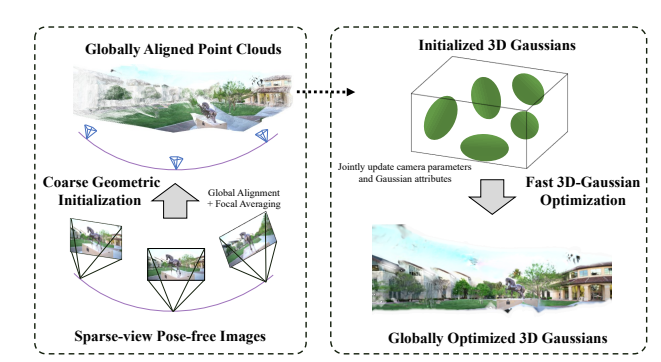
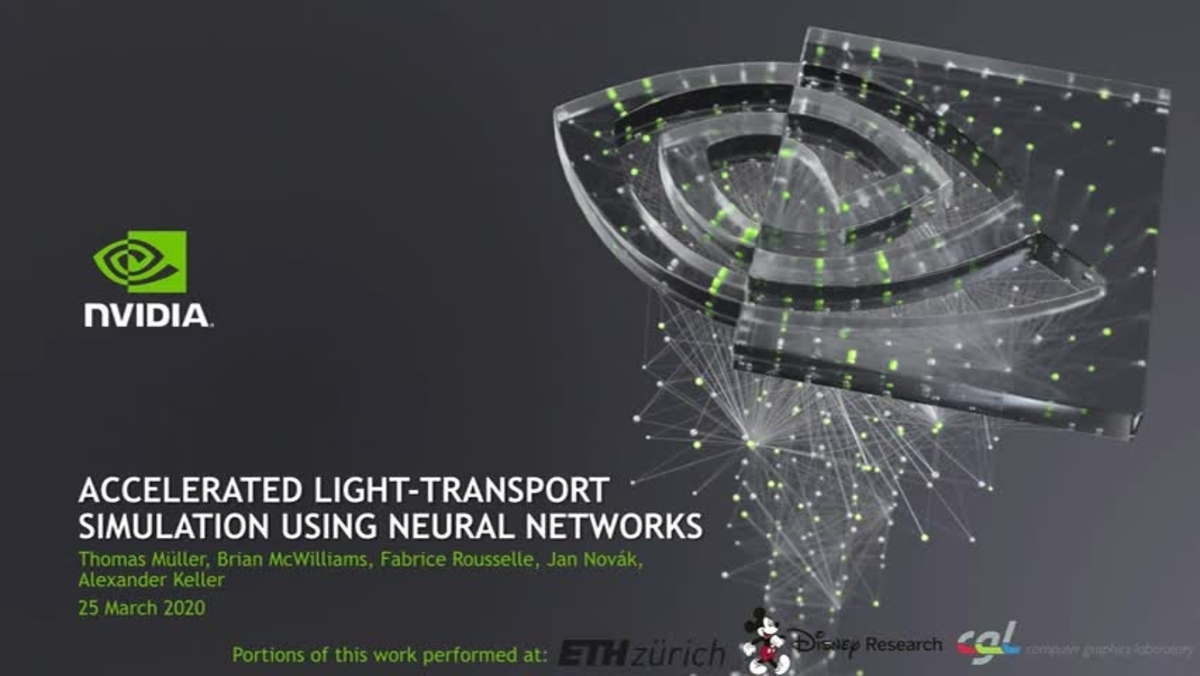

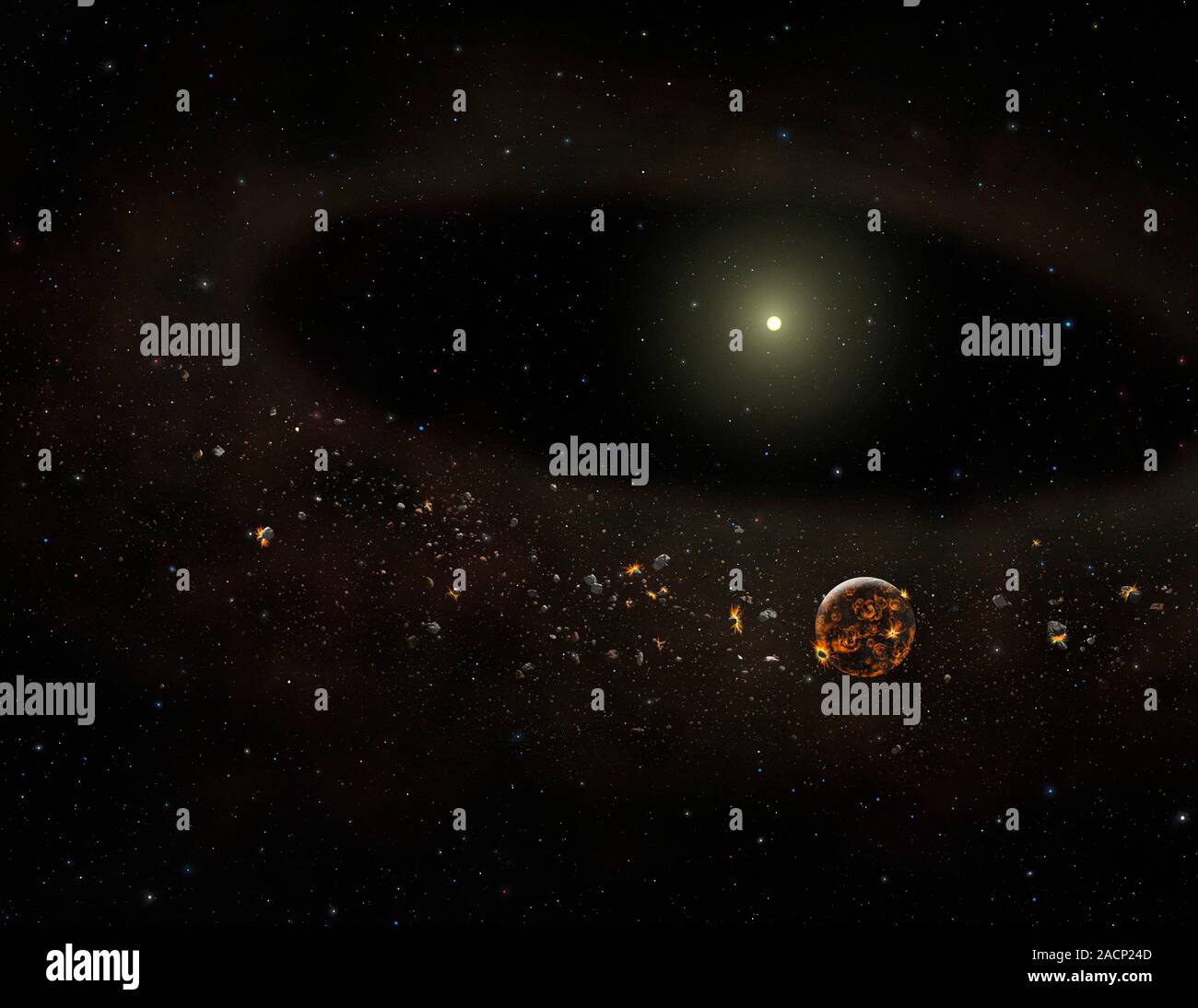 >
>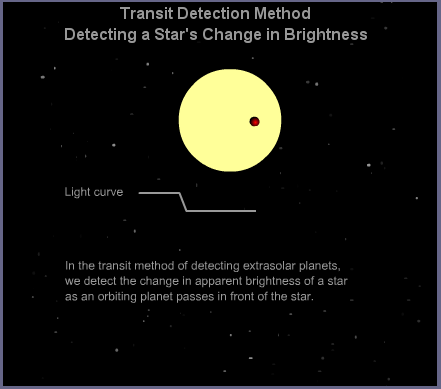 >
> >
>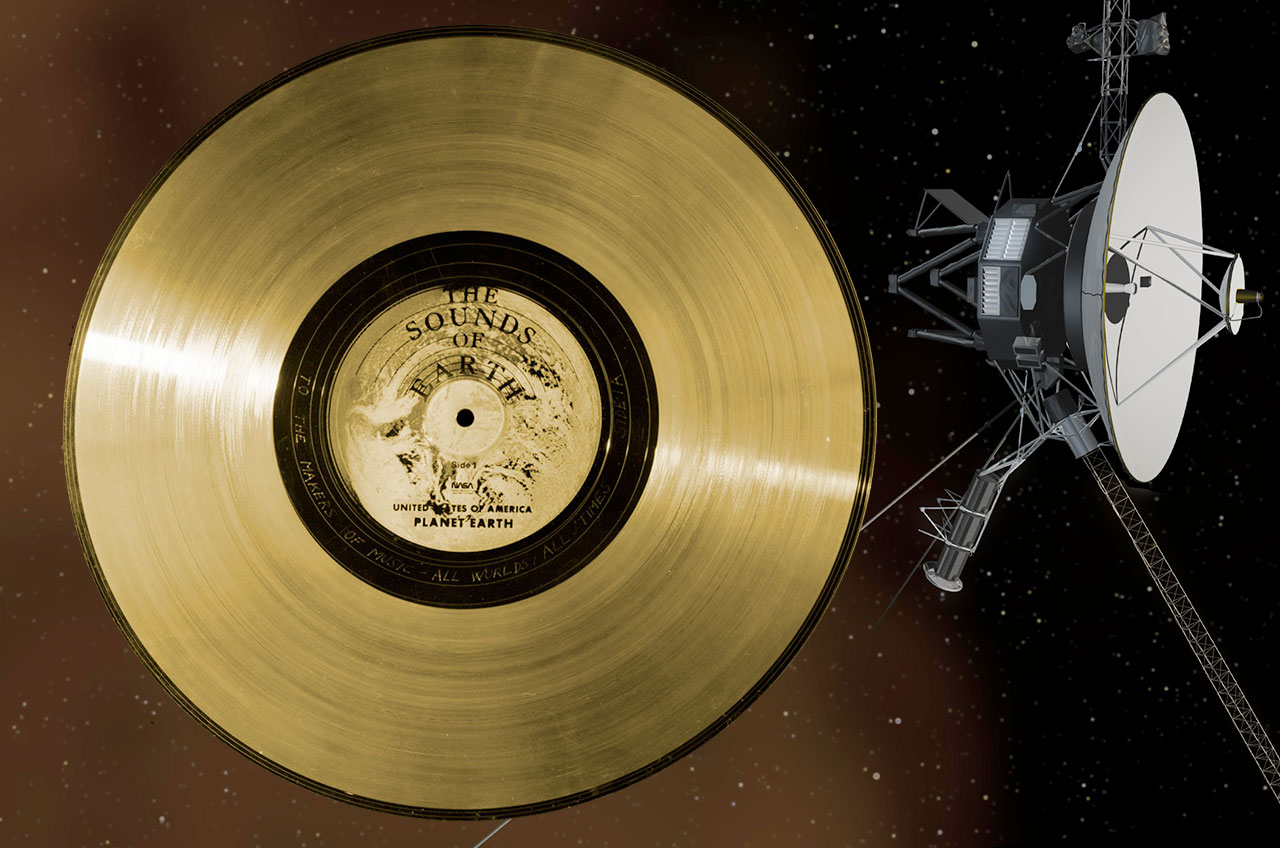 >
>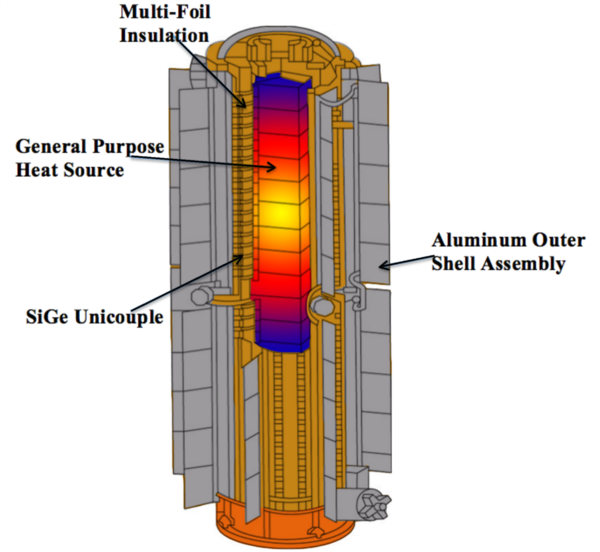 >
> >
>